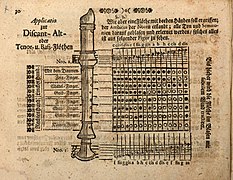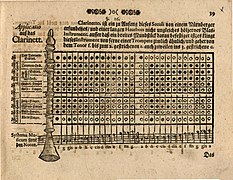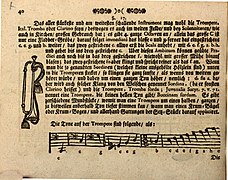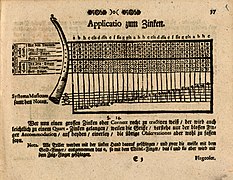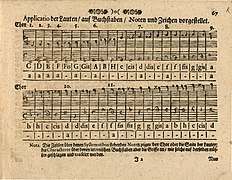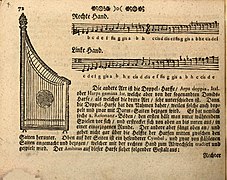Joseph Friedrich Bernhard Caspar Majer
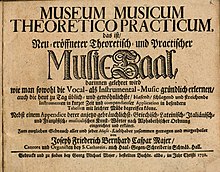
Joseph Friedrich Bernhard Caspar Majer (Schwäbisch Hall, 16 October 1689 - Schwäbisch Hall, 22 May 1768), was a German musician from the beginning of the 18th century, a "significant writer" on music in the late Baroque era.[1]
He was a singer at Schwäbisch Hall, an organist and cantor at St. Katharina, and author of two books, music methods:
- 1718, Hodegus musicus. Teaches singing. A later edition published Schwäbisch Hall by Georg M. Majer, 1741.[2]
- 1732, Museum musicum theoreticalo-practicum. The author advertised on the title page that readers would learn how to thoroughly learn both vocal and instrumental music) (1732).[3] A second edition came out in 1741.[3]
His second book was written to acquaint would-be musicians with information to help them learn to play instruments. The instruments included:
viola de gamba and viola d'amore.[3] The book also includes the basics for reading music, a "survey of vocal music and intervals," and a dictionary of musical terms. [3][4]
What made him to be considered a significant writer was the annotations that he made in his personal copy of Museum musicum theoreticalo-practicum.[1] That city reside in the Württembergische Landesbibliothek, Stuttgart.[3]
-
Tenor Bass Recorder
-
Chalumeau
-
Transverse flute
-
Bassoon
-
Flageolet
-
Two-key clarinet
-
Two-key clarinet (1)
-
Clarion
-
Fingering chart, cornett
-
Tuning the lute, fretboard
-
Lute, strings, their notes placed
-
Psaltery
References
- ^ .
- ^ "Major Joseph Friedrich Bernhard Caspar 1689-1768".
Hodegus musicus oder getreu-musikalischer Wegweiser, darinnen gezeiget wird das rechte Fundament der Singkunst (translation: Hodegus musicus or faithfully musical signpost, showing the right foundation of the art of singing) ...1 copy preserved...Utrecht, Bibliothek der Rijksuniv
- ^ JSTOR 737015.
- ^ "PRINTED SOURCES OF MUSIC for LUTE, ORPHARION, BANDORA, VIHUELA, ARCHLUTE, CHITARRONE AND THEORBO". Retrieved 15 February 2023.
1732 Majer, Joseph Friedrich Bernhard Caspar, Museum musicum theoretico practicum, das ist: Neu-eröffneter theoretisch- und practischer Music-Saal...treatise with tuning chart for the 11-course lute in French tablature
- Maier, Joseph F. (1732). Museum Musicum Theoretico-Practicum. München, Bayerische Staatsbibliothek. Schwäbisch Hall.

